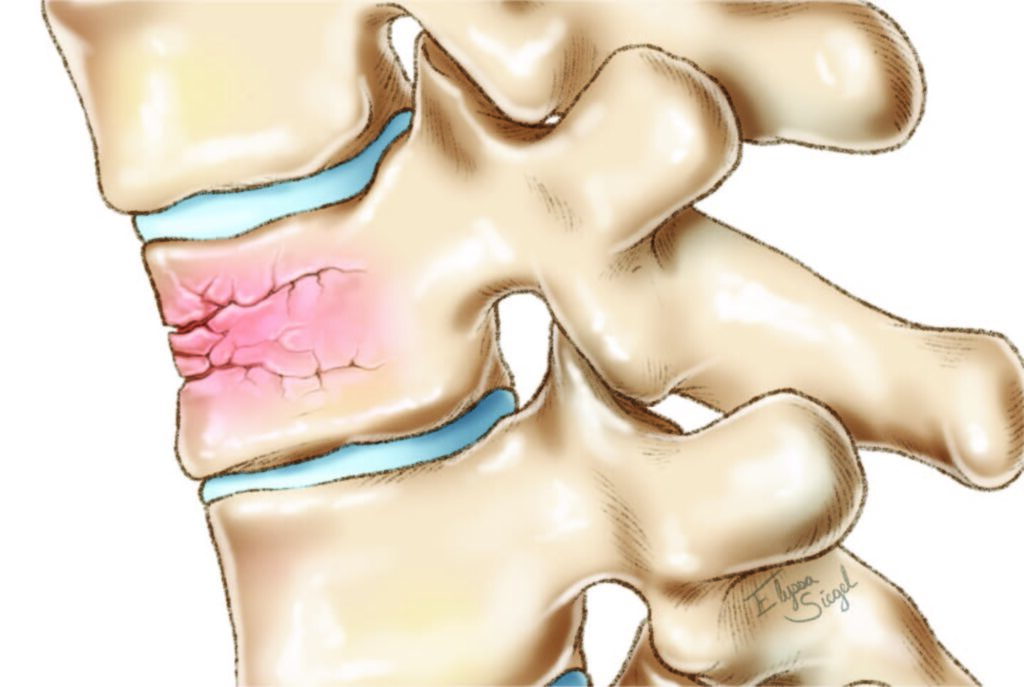Traumatic Spine Fracture
Traumatic spine fractures occur when a traumatic direct or indirect force is applied to the spine, resulting in a fracture in the vertebrae . The vertebrae collapse and result in a compressed, fractured vertebra.
What’s in this section?
Signs and symptoms
Symptoms of traumatic spine fracture depend on the location and severity of the fracture. Common symptoms include:
- Significant neck or back pain that is made worse with movement
- Numbness, tingling or weakness
- Difficulties with bowel and bladder functions

Potential Causes
Traumatic spine fractures are often caused by a car accident, fall, sports injury or gun shot.
Diagnosis
Diagnosis of traumatic spine fractures start with a physical exam and medical history. Other procedures and tests may be needed to diagnose a fracture, including x-rays , computed tomography (CT) and magnetic resonance imaging (MRI).
Treatment options
There are a few possible treatment options depending on the severity of the fracture and stability of the spine:
- Bracing to stabilize the fracture
- Decompression and fusion. An incision is made and the surrounding tissue is dissected until the spine is reached. We then remove the disc starting superficially, then deeper in the joint space until we work all the way through the joint and enter the spinal canal where the fracture compresses the nerves. We remove the compressive pathology very carefully, as the nerves that are in that area are very delicate. After we get all of the pressure off of these delicate nerves, we reconstruct the joint using an implant of cadaver bone or a cage made of synthetic materials. A metal plate and screws are secured to the front of that part of the spine so the bones of that segment will heal/fuse and remain stable. The wound is closed with stitches under the surface that dissolve after the skin has healed.
Conditions
Request an appointment online and we will guide you through the next steps
Get to know the physicians of Goodman Campbell
Goodman Campbell
Patient Stories
Request an appointment online and we will guide you through the next steps.

